A friend of mine pointed me at a post by Tamora Pierce about her use of female protagonists. She was responding to a blog post by Hannah Moskowitz, an author of YA fiction, suggesting that there are not enough books for boys which real teenage boys can relate to: Boy Problem. Moskowitz’s theory is that boys have been stereotyped, sanitised and stripped of substance and she calls on authors to “write, publish, and promote books with real boys”.
In response Tamora Pierce wrote a post of her own on Why I write girl heroes for the most part arguing that “there are still more books for guys out there than there are for girls” in both classic children’s fiction and contemporary teenage novels, and listing various authors of books for boys.
The whole discussion is fairly amicable and shouldn’t be viewed as polarised sides of an argument. Both authors have acknowledged the validity of at least part of the other’s point. My own opinion is that I’ve not noticed a lack of YA fiction with male protagonists – but I think Moskowitz is right to say that boy heroes are stereotyped as much as female ones. It’s also interesting that they both agree that boys don’t buy books the way girls do:
The problem we’re talking about is fairly simple: boys don’t read YA. This isn’t an issue of “boys don’t read”–we’re not talking about these boys. We’re talking about avid readers, boys who ate up middle grade but go to adult fiction and non-fiction instead of passing through YA, and nobody really knows why. – Hannah Moskowitz
Why do publishers appear to publish so many books for girls? Because girls buy books. That’s it, clear and simple. Guys don’t. They take books out of the library, or they borrow books from girls, but they don’t buy. Not like girls do. – Tamora Pierce
Obviously there are comments to both blog posts from boys who read and from boys who read fiction with female protagonists. But those male commenters appear to be exceptions, in their own eyes as well as the apparent commenting demographic.
My own experience is heavily coloured by the fact my first trilogy was SF and published for YA while I was myself a young adult (19 when my first book was accepted). My protagonist and hero was female. My readers were male and female. The readers that joined my fan forums, wrote to me and messaged me didn’t demonstrate a gender bias. When I worked with school class groups I had no difficulty in interesting boys in my SF workshops – some girls seemed deliberately uninterested in SF and would need to be drawn in more subtly. But then SF is often viewed as a boy’s genre.
When I give my workshops for schools I ask the students to introduce themselves in turn my saying their name and the book they read most recently – or a book they’ve enjoyed. (I always lead off with “I am Rhiannon and I’ve recently read” and sometimes don’t choose the most recent book if the choice could carry unwanted connotations; I do try to pick something I’ve read in the last month.) My experience of the response, boys and girls is along these lines: Harry Potter, Discworld, Harry Potter, Jackie Wilson, Twilight, Goosebumps, Harry Potter, Twilight, Jane Austen, CHERUB, Asimov, Twilight, Discworld, Dickens, Jackie Wilson. I get girls who won’t admit to reading anything and whisper and giggle to their friends. I encourage them in by asking what they watch on TV and I also draw them in (literally!) in the stage when they have to draw their character, whatever their artistic skill the girls who dress to impress *care* about what their imagined character looks like. I get boys who won’t admit to reading anything and shout and want to have sword fights in the action sequence of the workshops. I ask them if they play computer games and what games they like. They can be attracted by drawing their character but respond better to dramatic tableaus and a call for ‘speakers’ to represent a group.
These boys and girls are obviously stereotypes. I encounter very few of either type. Perhaps three whispery giggly girls and three disruptive wriggling boys in a group of fifty students. The other participants may have their own challenges but these are the non-readers and the most difficult to engage. I think the fact these children view reading as uninteresting or unadmirable must come from parents and there is unfortunately a stereotype of the reading child as a teacher’s pet, elitist and unathletic, unattractive and unpopular.
As a writer I write for the reading child: the child I was and the reader I remain. But I want to speak to every child – and every child is a reader to some degree. Even the resolute non-readers experience narrative in TV programmes and/or computer games. (There are children with a damaged narrative sense for whom constructing a history is an established counselling technique.)
I write predominantly female characters for several reasons. I attended an all girls school from age 11 to 18 and my family is predominantly female. I’ve grown up among girls and women more than boys and men. When Terri Apter wrote that the world of girls was one of “secrets and whispers and shifting affections” that resonated with me. I watched Heathers and Mean Girls and saw my own experience reflected.
I aim not to stereotype my characters and, as I said above, I think it helped that I entered writing as an SF author. But now, after over a decade as a professional writer, my consciousness of the economics of writing particular types of novels affects my casting of characters.
The accepted wisdom in publishing as I’ve experienced it is that girls and women are enthusiastic readers, regardless of the gender of the protagonist; boys and men are reluctant readers who are only willing to read books about boys and men having adventures. My own experience suggests that contempt for reading in teenagers is much more a construct of exaggerated gender roles in society than any gendered antipathy. Both women and men can fall into the trap of wanting to appear anti-intellectual.
I write both male and female characters and although many of my protagonists are female they’re not exclusively so. I write with both plot and character in mind and what type of person would feel and act in this way in this place in this time. I don’t intentionally write romances although some of my fiction could be mistaken for romantic because I try to express emotional contexts including love and obsession in my work. I don’t exactly write horror novels either although the psychological thriller landscape of my fiction can be described that way. I’ve attempted to write across genres; moving from SF to fantasy to ‘realist magicism’ to contemporary to thrillers.
I still write male characters more thoughtfully then women, I have to work harder with the characterisation for men. But I’m also not an aristocrat, a psychic, a computer hacker, a world traveller or a ghost. Another worldview is always a stretch. I hope that my male characters are believable to my male readers just as I hope all my characters are believable to all my readers.
The problem of gender in character roles is essentially an economic one. If you write fiction by the numbers then you’re probably better off writing about boys than girls. If girls read books about boys and not vice versa then the payoffs are inevitably better. However, very few authors can cope with writing formula fiction long term. Everyone wants to write their own story.
What transcends the economics is the artistry of creation; the writer’s story isn’t an autobiography. The character who best expresses the vision of the novel in the form of the protagonist may be an authorial alter-ego but gender is a very minor part of that authorial identification. Philip Pullman’s His Dark Materials series had Lyra as its female hero protagonist. Joanne Rowling invented the male hero protagonist of Harry Potter. Pullman is to Lyra as Rowling is to Harry. When categorising a book for boys or for girls is it the gender of the author or the hero that matters? Or perhaps once you achieve a certain degree of success these questions stop mattering so much.
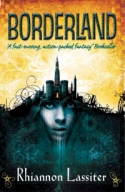 I have written three Rights of Passage novels: Borderland (2002), Outland (2003) and Shadowland (2005). It is now 2012 and I haven’t completed the quintet.
I have written three Rights of Passage novels: Borderland (2002), Outland (2003) and Shadowland (2005). It is now 2012 and I haven’t completed the quintet.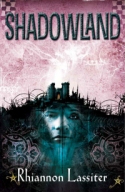 Perhaps the author has other projects on the go. George R R Martin and his fan base fell out with each other over the fans demands for more Ice and Fire novels and their criticism of Martin for working on anything else. On the one hand I completely appreciate (and share) their frustration, on the other hand writing cannot be produced on command.
Perhaps the author has other projects on the go. George R R Martin and his fan base fell out with each other over the fans demands for more Ice and Fire novels and their criticism of Martin for working on anything else. On the one hand I completely appreciate (and share) their frustration, on the other hand writing cannot be produced on command.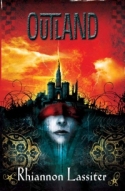 Perhaps the author doesn’t know how to finish the books. After a gap of seven years this is entirely a possibility for me but it’s not been tested. I had a plan for how to finish these books and I remember a lot of it and I even have notes towards them. But with each year that passes it becomes less likely that I will complete the series if only because my writing evolves and I might be danger of pastiching my own style in returning to an earlier one. These are the risks of series fiction and why I now concentrate on novels which don’t depend on sequels.
Perhaps the author doesn’t know how to finish the books. After a gap of seven years this is entirely a possibility for me but it’s not been tested. I had a plan for how to finish these books and I remember a lot of it and I even have notes towards them. But with each year that passes it becomes less likely that I will complete the series if only because my writing evolves and I might be danger of pastiching my own style in returning to an earlier one. These are the risks of series fiction and why I now concentrate on novels which don’t depend on sequels.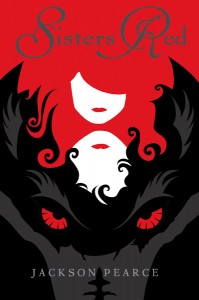
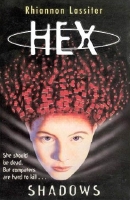 When I was 19 I was offered a two book contract on the basis of one book part written and one yet to be decided. Second book syndrome kicked in while I was still at university and still very unsure of my own ideas. I suggested a second book in the same series, a sequel to my first, or rather the middle book of a possible trilogy. It wasn’t my aim was to push the company into contracting me for a third. Although I had a number of new ideas I also wanted to continue the story I’d started with the characters of my first novel. Ultimately what decided the issue was that the first novel was selling well and the publishing company seemed keen to continue with more. They published the whole trilogy, which continues to sell well to this day.
When I was 19 I was offered a two book contract on the basis of one book part written and one yet to be decided. Second book syndrome kicked in while I was still at university and still very unsure of my own ideas. I suggested a second book in the same series, a sequel to my first, or rather the middle book of a possible trilogy. It wasn’t my aim was to push the company into contracting me for a third. Although I had a number of new ideas I also wanted to continue the story I’d started with the characters of my first novel. Ultimately what decided the issue was that the first novel was selling well and the publishing company seemed keen to continue with more. They published the whole trilogy, which continues to sell well to this day. Steven Brust is slowly ploughing his way through a fantasy series that will ultimately have at least 18 titles (not counting backstories and sidestories about other characters). He started in 1983 and has produced 13 so far (again not counting backstories and sidestories) which gives him a productivity of almost one novel every two years. Iorich, published in 2010, is book 12 (counted in order of publication, internal chronology is more complicated).
Steven Brust is slowly ploughing his way through a fantasy series that will ultimately have at least 18 titles (not counting backstories and sidestories about other characters). He started in 1983 and has produced 13 so far (again not counting backstories and sidestories) which gives him a productivity of almost one novel every two years. Iorich, published in 2010, is book 12 (counted in order of publication, internal chronology is more complicated).
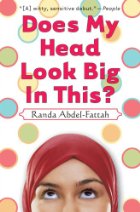 Does My Head Look Big In This? by Randa Abdel-Fattah
Does My Head Look Big In This? by Randa Abdel-Fattah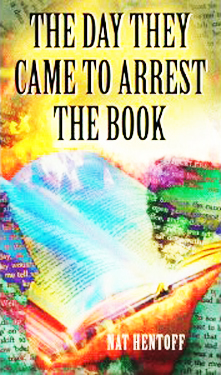
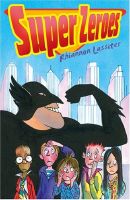 Psychologist Sharon Lamb’s address to the 118th Annual Convention of the American Psychological Association was heavily syndicated across the internet last week. The essential details are here:
Psychologist Sharon Lamb’s address to the 118th Annual Convention of the American Psychological Association was heavily syndicated across the internet last week. The essential details are here: